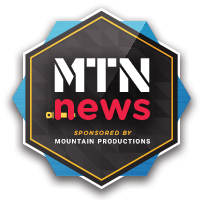Manufacturers require it and we greatly encourage proper inspection of equipment. We’re in an industry that requires countless tools, systems, products, PPE, on-site safety systems, and more. With all of these moving parts it’s important to make sure everything is in working order before bringing it to a job site.
Here are a few of the essential items that we encounter on a day to day, and the inspection tips that can keep your gear working day after day. As recommended, all inspections should be documented for future reference. In our first post of this 2-part series, we’ll focus on fall protection and safety equipment.

Self Retracting Lifelines (SRLs)
[Nano-Lok, Protecta Rebel, Sealed-Blok]
- DBI-SALA & ANSI require an annual inspection at least by a competent person. For CSA standards in Canada, the requirement is that the SRL must be serviced within 2 years of the manufacturing date, and then each year following.
- Additionally, to the annual periodical inspection, DBI-SALA, OSHA, & ANSI require that SRLs are inspected by the user each time before use
- Like all fall protection products, SRLs are to be removed from service following an impact.
Here are 9 areas that users must check in order to successfully approve their SRL for use:
- Impact indicator
- Screws, fasteners
- Housing
- Lifeline
- Locking action
- Retraction/extension
- Hooks/carabiners
- Reserve lifeline
- Labels
Download DBI-SALA’s inspection checklist (.pdf)

Harnesses
[Exofit NEX Rope & Rescue, Petzl AVAO Bod Fast Int’l, Protecta Construction Style, ]
- DBI-SALA & ANSI require harnesses to be inspected at least annually by a competent person.
- Petzl recommends a detailed inspection by a competent person at least annually as well
- Prior to donning, harnesses should be inspected by the user, as required by DBI-SALA, Petzl, OSHA, & ANSI. Once in use, harnesses should still be regularly monitored to ensure all connections and equipment items are correctly positioned
- Like all fall protection products, harnesses are to be removed from service following an impact
Some key areas to inspect:
- Hardware (buckles, D-rings, pads, loop keepers, vertical torso adjusters)
- Material webbing & stitching
- Labels
- Straps
- Attachment points & connectors
Download DBI-SALA’s harness inspection checklist (.pdf)
Download Petzl’s harness inspection procedure (.pdf)

Lanyards
[Shockwave2, EZ-Stop, Force2, Protecta PRO]
- DBI-SALA & ANSI require harnesses to be inspected at least annually by a competent person.
- Prior to usage, DBI-SALA, OSHA, & ANSI require the user to inspect their lanyards
- Like all fall protection products, lanyards are to be removed from service following an impact
When inspecting your lanyards, make sure to check each of the following:
- Hardware (snap hooks, carabiners, adjusters, keepers, thimbles, D-Rings)
- Webbing & stitching
- Synthetic rope
- Wire rope (if applicable)
- Energy Absorbing Component
- Labels
Download DBI-SALA’s lanyard inspection checklist (.pdf)

Horizontal Lifelines
[EZ-Line, Sayfline]
- DBI-SALA requires that horizontal lifeline systems are inspected annually by a qualified person. If the product is being used in extreme working conditions, the frequency of service will increase
- Before each use, and following installation, a qualified person must inspect the system
- Following an impact, DBI-SALA, OSHA, & ANSI require the horizontal lifeline system is to be removed from service or returned for inspection/repair
Here are some features to inspect on your horizontal lifeline system:
- Hardware (screws, nuts, bolts, etc.)
- Housing
- Impact indicator
- Rope
- Wire Rope (if applicable)
- Labels
- Shock Absorber
Download DBI-SALA’s horizontal lifeline inspection checklist (.pdf)

Helmets
[KASK Super Plasma, KASK Super Plasma Hi-Vis, Petzl Vertex Vent]
- Both KASK and Petzl require an annual inspection by a competent person, as well as user inspection before each usage. Depending on the amount and intensity of usage, your frequency of service and inspection could increase
Here are the major areas to check on your work helmet:
- Outer Shell
- Inside Shell
- Helmet Liner
- Cradle (webbing head harness)
- Headband
- Adjustment System
- Chin Strap
- Comfort foam padding
Download KASK’s inspection procedure (.pdf)
Download Petzl’s Vertex Vent inspection procedure (.pdf)
Always make sure to follow the manufacturer guidelines for equipment inspection, as well as OSHA’s and ANSI’s. This post is meant as a helpful resource, and is no way a legal document. We’re always here to help if you have any questions on maintenance or servicing of equipment. Properly inspecting your equipment will give you greater peace of mind when you’re 50’ in the air. Taking the time to frequently and periodically inspect your gear can save a life.
Check back for Part 2 of our Inspection Tips blog series where we will discuss inspecting rigging hardware, including slings, wire rope, shackles, turnbuckles and more.


